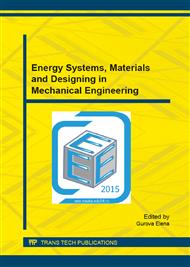[1]
I.S. Mezhov [et al. ], Theory of Management: History of Management, Theory of Organization, Organizational Behavior, Novosibirsk, NSTU, (2012).
Google Scholar
[2]
V.V. Titov, I.S. Mezhov, А.А. Solodilov, Management of Production: Basis and Tools of Organization Development, Novosibirsk, IOPP SO RAN, 2008, 276 p.
Google Scholar
[3]
L.P. Vladimirova, Labor Economics: learning guide, 2nd edit., rewritten &updated, Moscow, Dashkov& Co, 2002, 300p.
Google Scholar
[4]
A.N. Fomichova, Quantitative Assessment of Management Performance. Bulletin of Russian State Humanitarian University, 6 (107) (2013) pp.151-162.
Google Scholar
[5]
A.L. Lavrukovich, Improvement of Methodology for Labor Efficiency Assessment. Economics and Banks, 2 (2011) pp.39-45.
Google Scholar
[6]
I. Anisimova, Audit of Labor Force Efficiency. Kadrovik, 3 (2010) pp.014-019.
Google Scholar
[7]
I.S. Garina, Assessment of Labor Force Efficiency at Agricultural Enterprises. Problems of Economics and Management, 1(1) (2011) pp.51-53.
Google Scholar
[8]
E.A. Guryeva, Assessment of Senior Managers Performance. Directory on Staff Management, 1 (2013) pp.58-62.
Google Scholar
[9]
N.V. Kolosovskaya, Assessment Criteria of Labor Efficiency. VektorNauki, Tolyatti State University, 3(13) (2010) pp.236-239.
Google Scholar
[10]
M. Kolosova, Optimization Methods of Staffing Level: Four Methods / Staff Management, 8 (2208) pp.70-75.
Google Scholar
[11]
I.A. Liberman, Internal Regulation Methods of the Administrative and Senior Officers Number at Enterprises and Organizations. Financial and Bookkeeping Guidance, 8, (2008).
Google Scholar
[12]
Kamal M. Al-Subhi Al-Harbi, Optimization of Staff Numbers in the Process Industries: An Application of Dea. International Journal of Manpower, vol. 21 № 1 (2010) pp.47-60.
DOI: 10.1108/01437720010319453
Google Scholar
[13]
M.M. Kiseleva, Analysis and Measurement of Management Information. Modernization of Russian Economy: Innovations, Tools, Management: collected articles /edited by I.S. Mezhov, V.A. Titova. - Novosibirsk: NSTU (2011) pp.254-265.
Google Scholar
[14]
S.L. Kane Jeffrey, A. Freeman Kimberly, A Theory of Equitable Performance Standards. Journal of Management, vol. 23 № 1 (2010) pp.37-58.
Google Scholar
[15]
G.E. Slezinger, Social Economy: Textbook – М.: Delo I Servis, 2001, 368 p.
Google Scholar
[16]
A. V. Chuvaev, O.L. Lyamzin, Complex Approach of Decision-making within Manufacturing Process Management of Industrial Enterprises, Economics and Entrepreneurship, 4 (45-1), part 1 (2014) pp.427-430.
Google Scholar
[17]
G.V. Barrett, Comparison of Skill-Based Pay with Traditional Job Evaluation Techniques / Human Resource Management Review, 1, 1991, pp.97-105.
DOI: 10.1016/s1053-4822(05)80002-6
Google Scholar
[18]
Information on: Sriyan de Silva, An Introduction to Performance and Skill-Based Pay Systems: http: /www. ilo. org/public/english/dialogue/actemp/downloads/publications/srspaysy. pdf (date of access: 14. 01. 2015).
Google Scholar


